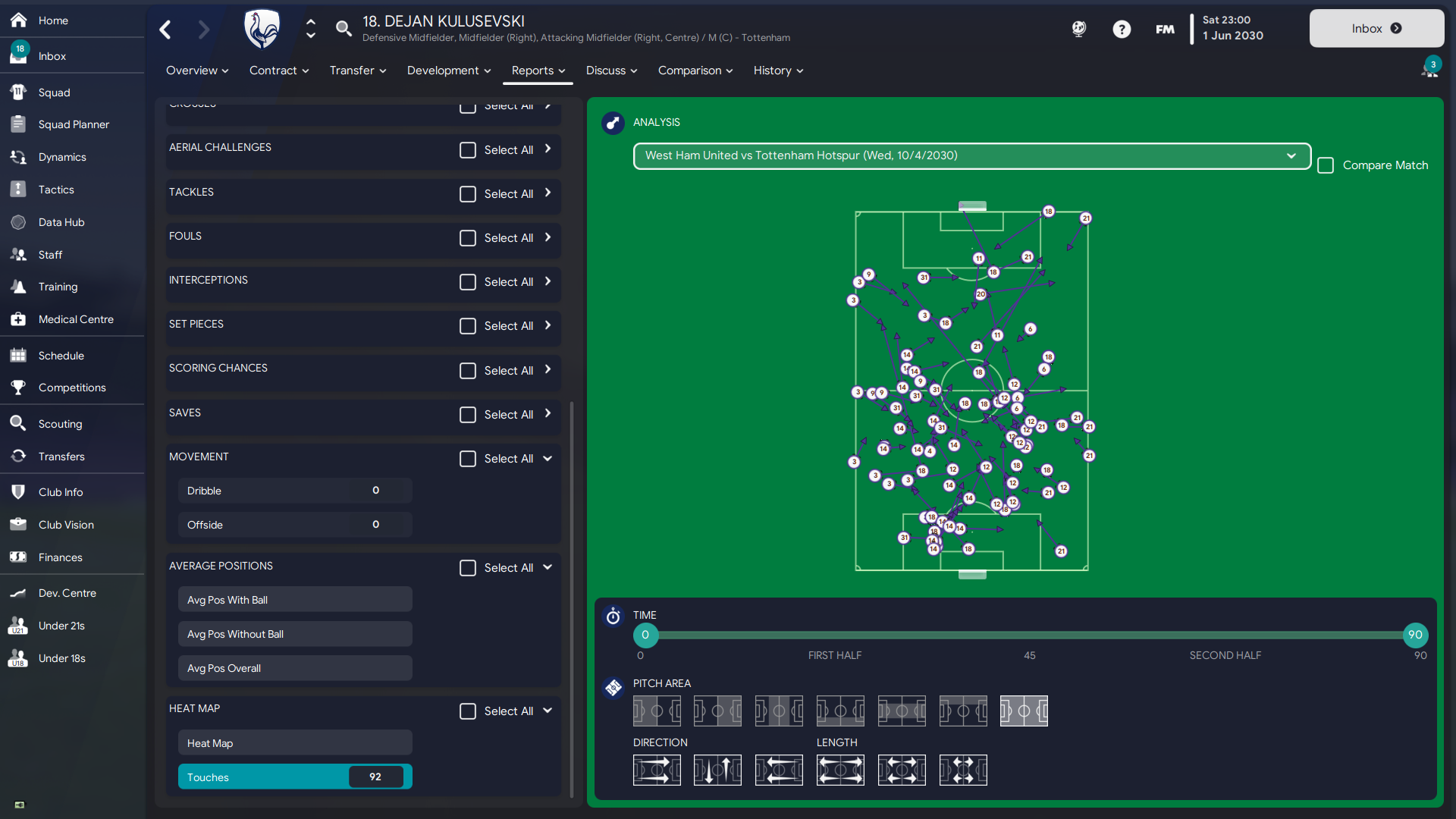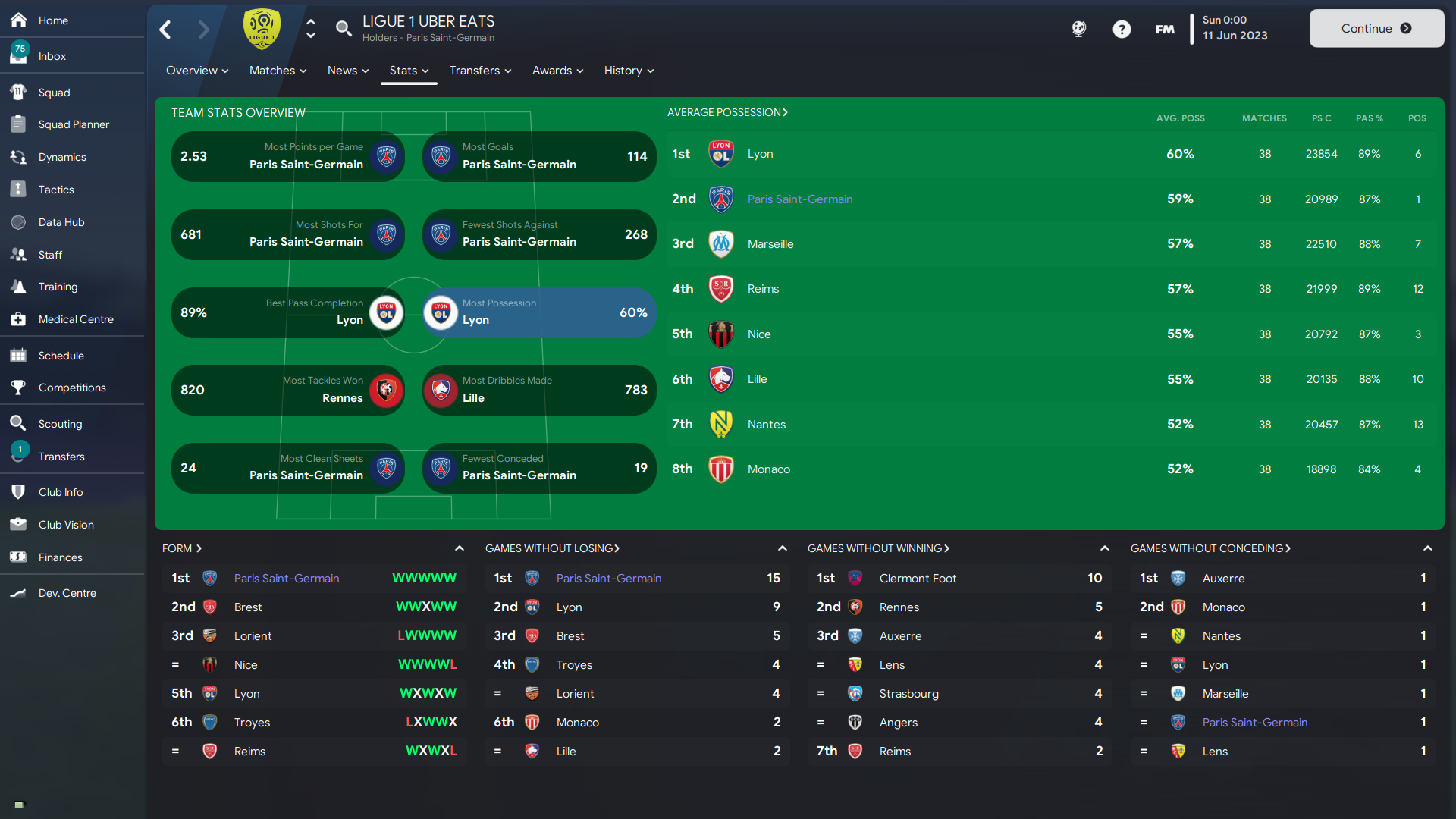
Introduction
Let's be clear: this tactic isn't going to result in you trouncing every team 5-0, match after match. That's just not football. It's a game of strategy and subtlety as much as it is of power and pace.But what this tactical approach can promise you, if you nail the recruitment and nurture the right squad, is the creation of a visually appealing style of play that can still yield significant success. It's about marrying aesthetic pleasure with winning effectiveness, all without losing the soul of the beautiful game.
Imagine a football orchestra where every player knows their part, where the melody of movement is as satisfying as the crescendo of a winning goal. That's the kind of team you could have - a side that delights both the purists and the pragmatists.
So, don't view this as merely a game plan. See it as a blueprint for a successful, engaging brand of football. One that resonates with the fans, challenges the opponents, and, over time, fills the trophy cabinet. But remember, it takes time, patience, and the right pieces. After all, Rome wasn't built in a day, and neither is a championship-winning team.
The Shape
The aim of this 4-3-3 isn't just to put a group of players on the pitch. It's more of a work of art, it's about letting them express themselves, play with a bit of swagger, and, importantly, bring their personality to the game. We're talking about a formation here steeped in adventure, daring and a touch of the theatrical.
Right at the heart of the action, you've got the Regista. They're not just any player; they're the conductor, the orchestrator. You know, the one whose boots seem to be making music with the ball. Their job is to craft, innovate, and keep the ball dancing to their rhythm. They're the ones who can turn a game on its head with just a flick of their boot.
But they're not alone in this. Oh no, they've got a couple of right-hand men. One's the guy who does the dirty work - the ball-winning midfielder. Their job's a tough one, no doubt. They're the ones lunging into tackles, disrupting the opposition's flow. A crucial player, this one, they keep things tight, so that the Regista has the platform to wave their magic.
Then there's the Mezzala, the mystery man. Operating in those half-spaces, he's the one giving the opposition headaches. He's constantly on the move, constantly overloading spaces, constantly providing an outlet for the Regista. It's like he's always there, but never quite there - a shadow that the opposition can't quite catch.
Of course, I can't forget about my fullbacks. Those lads, they've got a job and a half. One moment, they're locking down our flanks, the next, they're bombing forward, overlapping with our wide men. Their dynamism adds a whole new layer to our attack, keeping the opposition's defence guessing.
So, you see, this 4-3-3, it's not just a formation; it's a philosophy, a way of life. It's about expression, adventure, and above all, playing the beautiful game the way it was meant to be played - with panache and flair.
The Regista
In the enchanting world of football, various roles dictate the rhythm and outcome of every match. From the swift and agile winger to the stonewalled goalkeeper, each role plays an integral part in the unfolding drama on the pitch. Yet, amid these conventional roles, there's one that stands apart for its sophistication and subtlety - the regista. This piece seeks to unfold the charm, the challenges, and the critical importance of the regista in modern football.First, a touch of Italiana for the uninitiated - 'Regista' translates to 'director', a fitting term for the role it plays. More than just a deep-lying playmaker, the regista is the chess master of the team, controlling and dictating the tempo of the game, acting as the cogwheel that sets the team machinery in motion.
A regista doesn't rely on physical prowess or raw speed. Instead, their strength lies in a sublime understanding of the game, exceptional vision, and an uncanny ability to read the ebb and flow of the match. It's not a role for a player to run, but to think, strategize, and control.
Though deeply seated in the heart of the midfield, the regista doesn't primarily exist as a shield for the defence. The Regista's focus is the creative, orchestration of offense from deep areas. Think Andrea Pirlo or Xavi Hernández, players who, with their cerebral approach to the game, painted footballing masterpieces on the canvas of the pitch.
Yet, for all the allure of the role, the Regista's job is not without its challenges. It requires an exquisite blend of technical prowess, mental sharpness, and, critical, experience. The regista must possess an intimate understanding of their teammates' movements and the foresight to anticipate the opposition's intent. They need to thread the needle with pinpoint passes, transforming defence into attack with a single stroke.
And, in the modern game, they also need to adapt. The increasing pace and physicality of football require the regista to be more than just a pass master. They need to defend, to press, and to fight for possession. They need to blend the old with the new, the artistry with the athleticism.
Furthermore, the Regista's role extends beyond the pitch. They are leaders, influencers, and often the embodiment of the team's philosophy and identity. They are tasked with the responsibility of maintaining composure under pressure, instilling confidence within the team, and inspiring brilliance.
To conclude, the Regista is more than just a player. They are a conductor in the symphony that is a football match, commanding the game with every touch of the ball. In an era characterized by pace and power, the Regista serves as a reminder of the cerebral side of the beautiful game, a homage to the chess-like strategic element that underpins the raw physicality of football. The role of the regista is a nod to the past and a beacon for the future, a perfect blend of tradition and innovation in the ever-evolving landscape of football.
Securing the ideal player to fulfil the Regista's demanding role can often feel akin to hunting for a rare gem. It's a role that demands a distinctive set of attributes and an impeccable skill set that few players possess. But, every now and then, a glint of hope appears on the horizon, a player that shines with potential. For my team, that beacon was Dejan Kulusevski.





Results
SpursThis tactic, a work of both passion and precision, led to an unprecedented period of glory for Tottenham Hotspur. The London side, historically viewed as the underdog in the title race, emerged as an indomitable force, clinching the league title an astonishing five times. But the brilliance didn't stop there; it also propelled them to the pinnacle of European football, winning the coveted Champions League thrice, one of those remarkable triumphs etching their names into the annals of history with an illustrious treble.



PSG
The same tactical masterstroke was painting a similar picture of success in the French capital. Paris Saint-Germain, a club already dominant on home soil, began to exert an even more formidable authority both domestically and in Europe. This Parisian side, bristling with world-class talent and now guided by a proven, effective tactical approach, reached new heights. Their crowning achievement was a commanding sweep of the treble, an accomplishment that echoed their grand ambitions and underlined their supremacy on the continent.












![TinyHips' Dark Mode Skin v4.2 [Win + MacOS] *UPDATED FM26.0.5*](assets/downloads/fm26/fm26-dark-mode-skin.th.png)

Discussion: The Pirlo 4-3-3 Regista
6 comments have been posted so far.